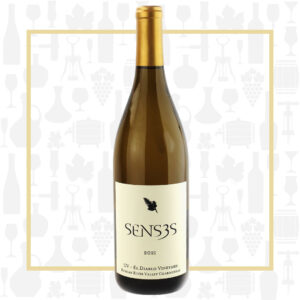Cellar Profile
Founded in 2011, Senses quickly became one of the most exciting wine projects out of the Sonoma Coast. Occidental natives and childhood friends, Christopher Strieter, Max Thieriot and Myles Lawrence-Briggs partnered with world-class winemaker Thomas Rivers Brown to produce coastal Pinot Noir and Chardonnay. Beginning with only 100 cases in their inaugural vintage, Senses currently crafts a few thousand cases of single vineyard and appellation wines. Grapes come from many renowned and family-owned vineyards including the B.A Thieriot, Terra de Promissio, Dutton Palms and Charles Heintz sites. The wines are complex, intense in flavour and beautifully balanced. All wines ferment via indigenous yeasts and are neither fined nor filtered. In the past two years, their presence in the marketplace has expanded to include placements on the menus of many Michelin-rated restaurants throughout the United States, including The French Laundry and Le Bernardin.
Region
The Russian River Valley AVA, which lies in the geographical heart of Sonoma, is home to over 15000 vineyard acres and 70 wineries. Fifteen miles long, it winds its way through Mendocino County AVA, Alexander Valley AVA and Healdsburg, before heading out to the Pacific. Warmer than Sonoma Coast AVA, but cooler than areas further inland such as the Alexander Valley AVA, the area’s dense morning and evening fog banks have become synonymous with the region, helping cool the grapes from the warm days. It is this diurnal change that allows for the production of world-class cooler-climate Pinot Noir and Chardonnay as well as fantastic warmer-climate Zinfandel, Syrah and Cabernet Sauvignon. There are varied soils within this appellation, but most share large amounts of gravel and some measure of clay.
Vineyard
El Diablo is a classic Russian River Vineyard, planted solely to Chardonnay (mainly the Wente clone). The soil is gravelly loam sitting on clay, which is helpful considering the lack of rainfall that has plagued California winemakers the past decade. Great pains are made to ensure all vineyard practices are sustainable.
Varieties
Chardonnay is the world’s most famous white-wine grape and also one of the most widely planted, with the most highly-regarded expressions of the variety coming from Burgundy and California. Climate plays a major role in dictating which fruit flavours a Chardonnay will have. Broadly speaking, warm regions such as California tend to give more tropical styles. While many Chardonnays have high aromatic complexity, this is usually due to winemaking techniques (particularly the use of oak) rather than the variety’s intrinsic qualities. Malolactic fermentation gives distinctive buttery aromas. Fermentation and/or maturation in oak barrels contributes notes of vanilla, smoke and hints of sweet spices such as clove and cinnamon. Extended lees contact while in barrel imparts biscuity, doughy flavours.
Winemaking
Hand-harvested fruit is brought to the winery in the cool of evening to be pressed into a selection of favourite French oak barrels (30% new). After a cold soak and spontaneous fermentation, the wine spends 14 months in oak, with regular lees stirring, before bottling. It spends some time in bottle before release to mellow out and avoid any possible bottle shock.
Tasting Notes
Honeysuckle, marzipan, ripe apple and peach on the nose. Complex flavours of buttered peach, apricot and pear mingle with almond and toast elements granted by the French oak. There is serious heft to this wine, but the trademark Senses balance is still there, with vibrant acidity providing a counterpoint to the viscosity. Chill lightly and enjoy with a good book, or pair it with a turkey dinner with all the trimmings.

 info@buyersandcellars.ca
www.buyersandcellars.ca
info@buyersandcellars.ca
www.buyersandcellars.ca